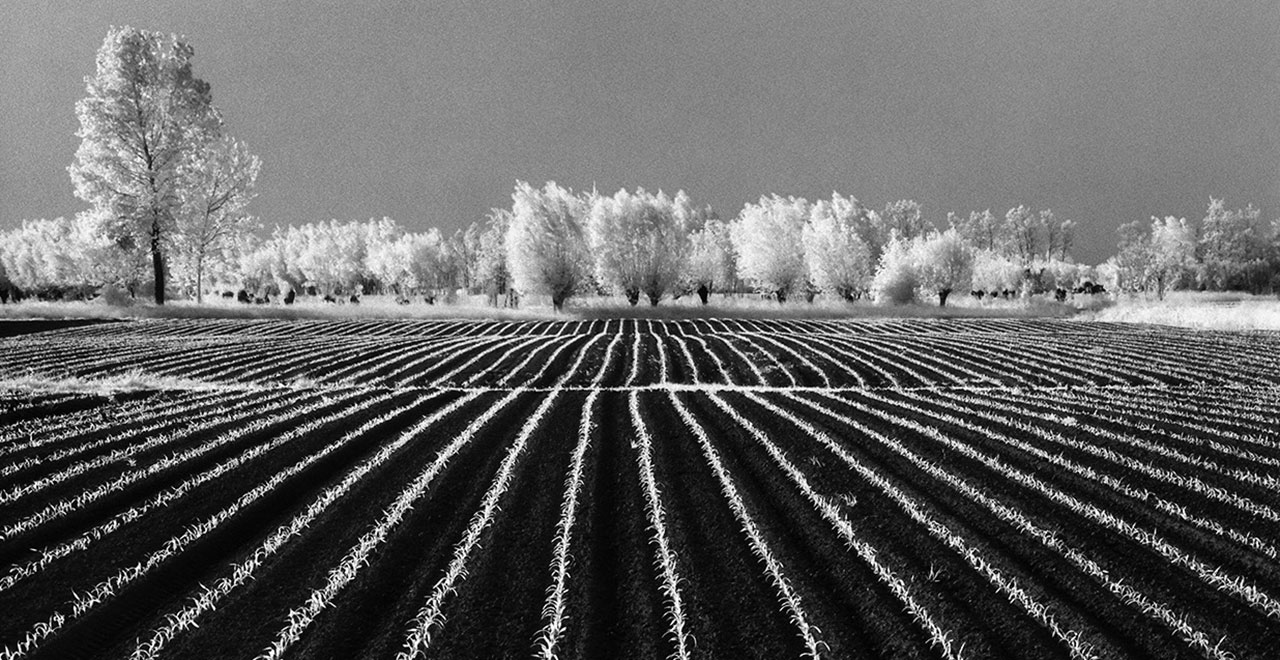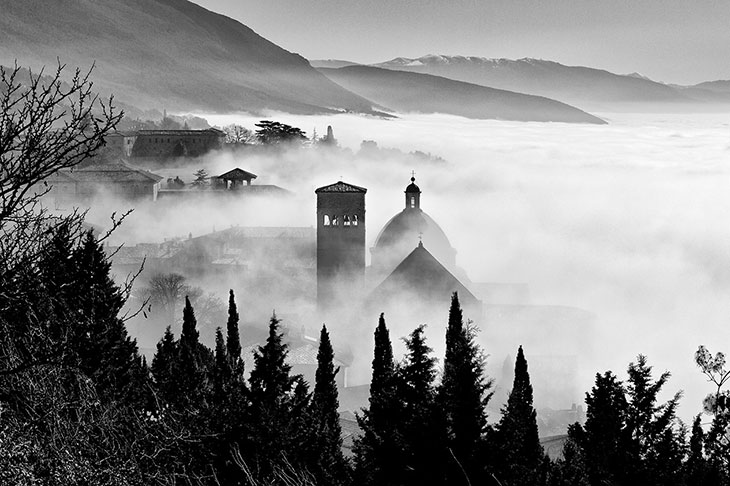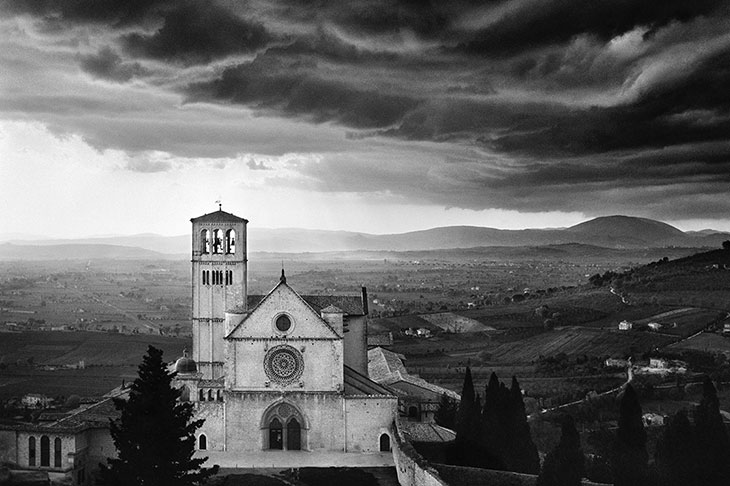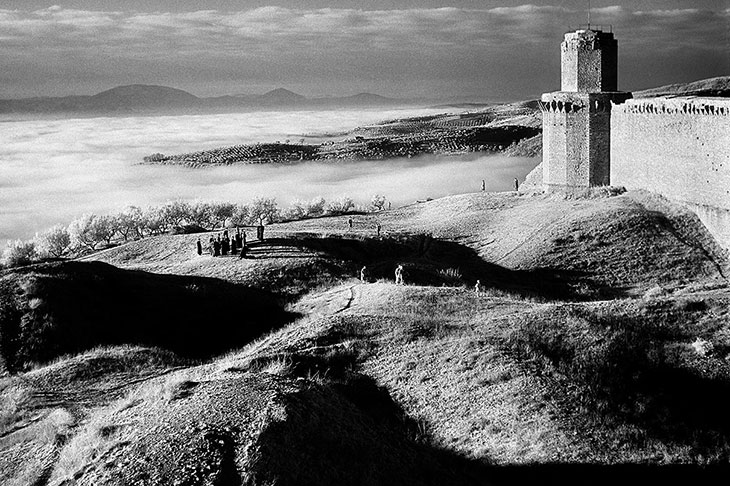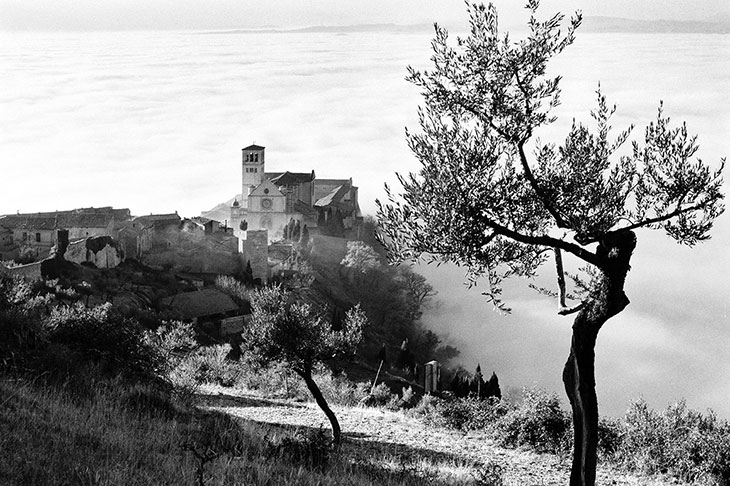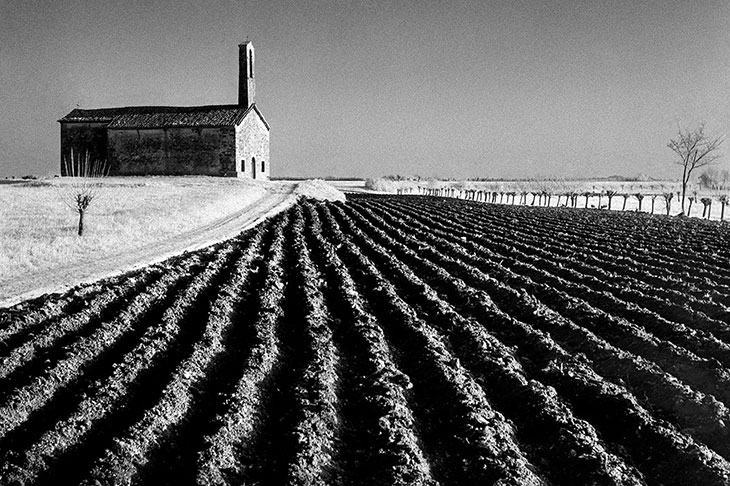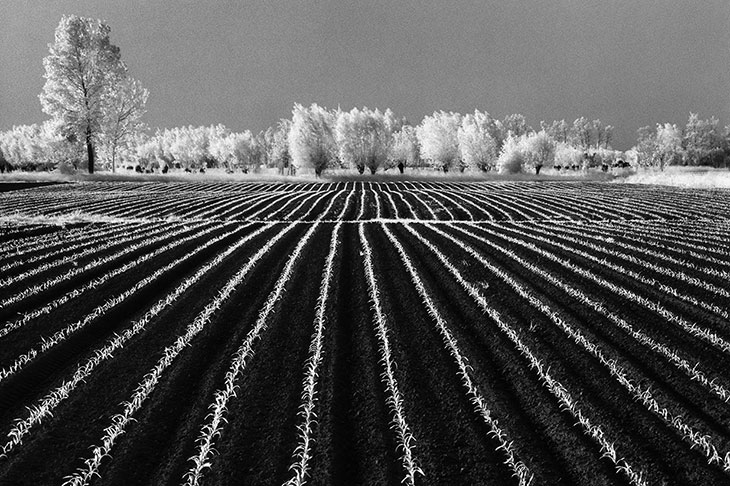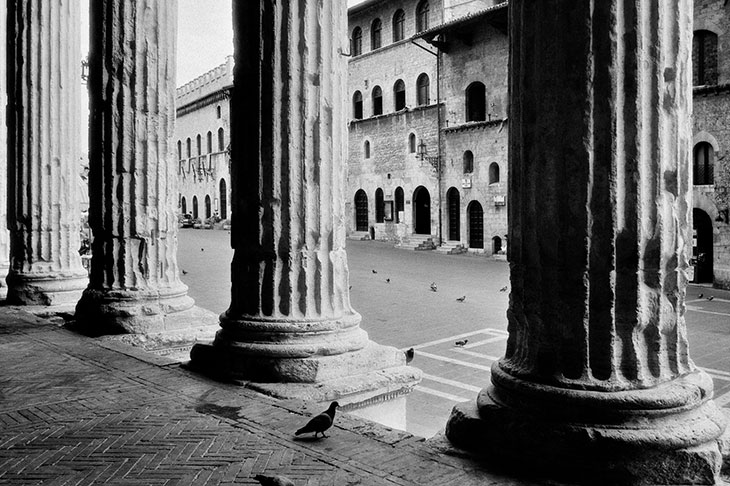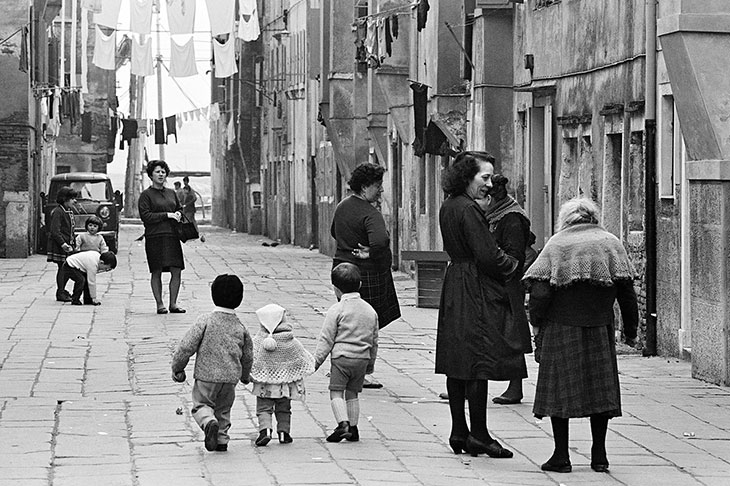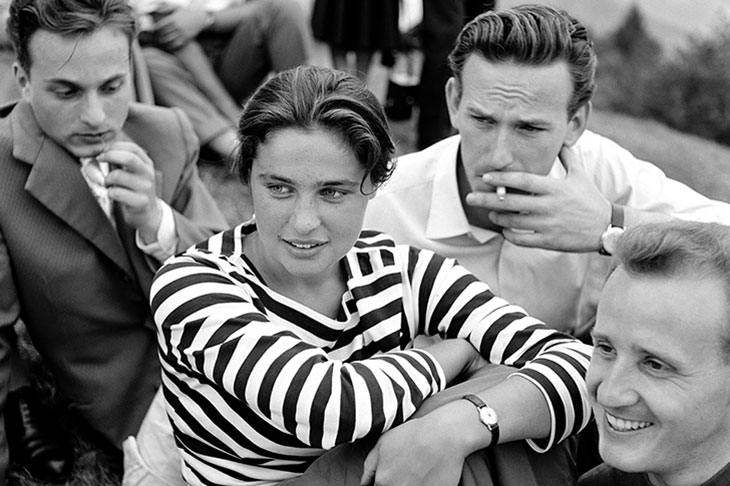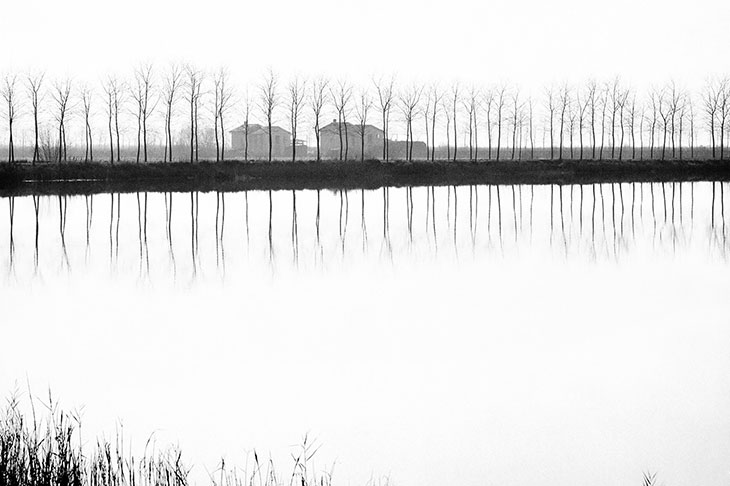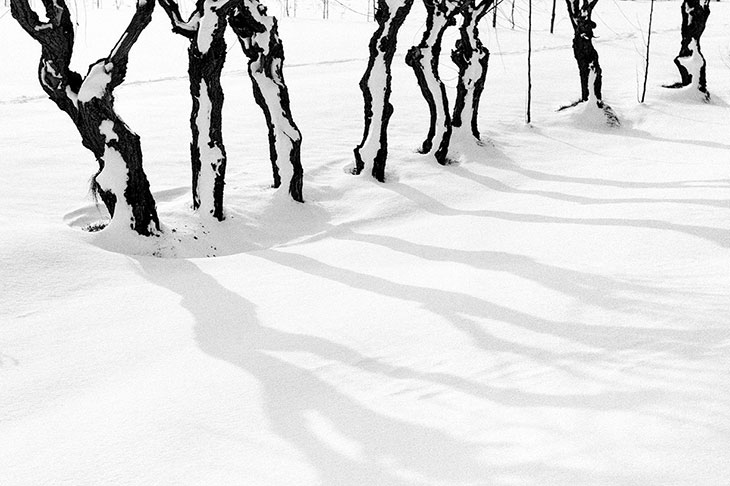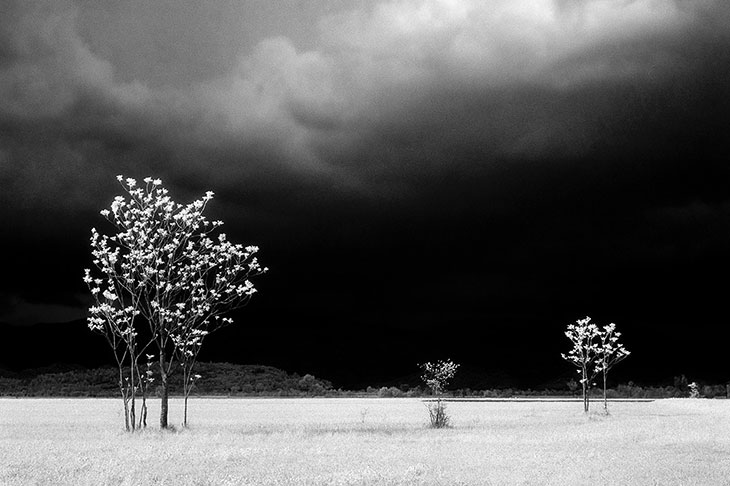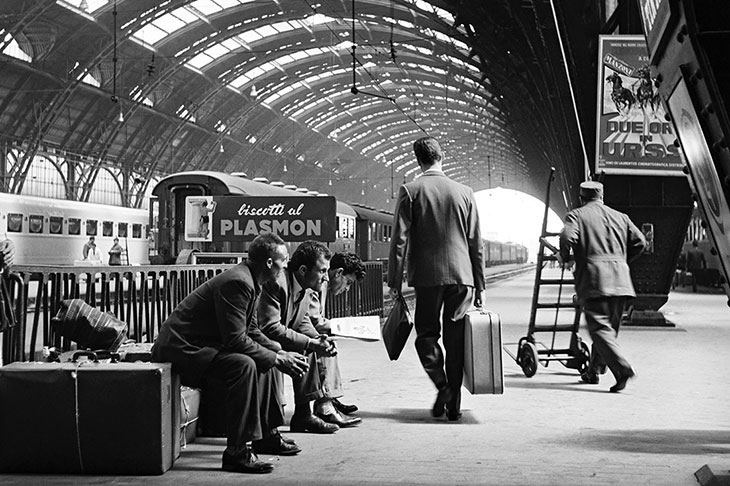“The real has an extreme fascination and photography is a deeper way of seeing reality. That is why from the beginning of my career I have chosen to photograph very simple things. In nature and in art there is only one categorical imperative: harmony.” With these words Elio Ciol defines the deepest meaning of his work as a photographer: a long journey now partly represented by the one hundred and thirty black and white images that can be admired on the Milan campus of Università Cattolica del Sacro Cuore.
The exhibition “Elio Ciol. Orizzonti di luce” was conceived and realised for Università Cattolica by the Crocevia Foundation, which also edited the publication of the large monograph “Elio Ciol”. Open to the public with free admission from Tuesday to Friday (10 a.m. to 2 p.m.) and on Saturday (10 a.m. to 1.30 p.m.), the exhibition winds its way through the ambulatories of Largo Gemelli, the Scalone d'Onore, the San Francesco Chapel and the reading room of the Central Library. From memories of rural civilisation to cities, from places of work and art to choral portraits, especially of children, and landscapes captured in the simplicity of everyday life, the images offer a broad perspective on the long creative path of the Friulian photographer born in Casarsa della Delizia in 1929.
And it all began here, in the small town where Ciol grew up and continues to work. As a child, he helped his father, the village photographer, in the darkroom, his “secret room” and his “treasure”. In 1943, during the German occupation of Casarsa, Ciol began photographing his first subjects, the Wehrmacht officers who went to the studio to have their portraits taken. A year later he met his “master of the gaze”, a German medical officer who photographed with a Leica. Developing and printing those photographs, he understood the centrality of the gaze to the subject. Thus, says Ciol himself, “I learnt to see. I knew places and people photographed by the German officer, and yet everything seemed new to me, as if through those images I was seeing everything around me and the people I met for the first time. With that light, with that cut, everything acquired a dignity that had been ignored until then. And so I saw, enchanted, my country, my people, the wrinkles in the faces of the elderly, the smiles of the children.”
A distinctive feature of his photography emerges in the landscapes of which he photographs the essential lines, portraying the geometry of nature. “Many people ask me about my photographing the essential lines of the landscape. This characteristic of my work also stems from my childhood. As a boy, I would rush out of the darkroom, where I had spent hours, to throw myself into the sun of the courtyard, and I had no other defence but to squint my eyes. This is how I discovered the geometry of nature. The light was strong and I had to keep my eyelids closed: then only the essential lines showed themselves, like maps of chiaroscuro, the inner framework of creatures and of Creation.”


